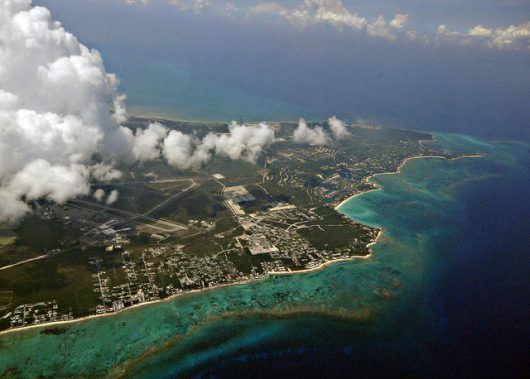Four Things You Never Knew About Hunger in the Bahamas

The Bahamas isn’t just full of vacationers lounging in the sun or carefree islanders living a life of luxury. The country known for sandy beaches and tropical excursions can’t escape the universal problem of hunger. Trying to understand persistent hunger the Bahamas is complicated.
More than 20,000 Bahamians are undernourished, meaning they don’t eat enough to maintain their health and stave off hunger. What follows is an explanation of the various factors contributing to the country’s food insecurity and what’s being done about it.
Here are four things to know about hunger in the Bahamas:
- The country’s climate and geography are largely to blame. Only around 1.5 percent of the land is suitable for agriculture. The country consists of several islands made mostly of limestone rock, which, unlike other types of bedrock, does not form soil when it weathers. The soil that does exist is of little agricultural value and requires expensive machines to prepare for farming.Fertilizers further prepare the land for crops, and pesticides, fungicides and other materials must be imported to maximize yields. Adding destructive natural disasters and a harsh climate to the mix makes the farming outlook worse. Around 3 percent of Bahamian workers make their living through agriculture, and the farming industry contributes around 2 percent of the country’s total GDP.
- Rising food prices make hunger worse. To compensate for the Bahamas’ lack of agricultural resources, it imports more than a billion dollars worth of food, a third of the country’s $3 billion trade deficit. The imported food is sometimes processed and often unhealthy, but the there is little choice. Food prices in the Bahamas fluctuate based on conditions in exporting countries.A study from the University of The Bahamas found that prices of essential food items, like sugar, grits and cheese, have substantially increased since 2014, in one case by as much as 282 percent. Without money to pay for food, thousands of Bahamians eat less and go hungry. The money that is spent on imported food isn’t staying in the country. Most of the revenue goes to foreign sellers, leaving the Bahamas in a cycle of food dependency, aggravated by a lack of funds to support Bahamian farmers and agribusiness.
- High unemployment contributes to food insecurity. The unemployment rate is 14 percent, and among youth it is around 30 percent. Lacking sufficient incomes makes Bahamians vulnerable to food insecurity, as does living in poverty. One in eight Bahamians is impoverished, causing families to make sacrifices as far as what, if anything, goes on the dinner table.
- There is hope. Despite large-scale hunger in the Bahamas, the number of people without access to food is falling. The undernourishment rate is 5.6 percent, far lower than in other Caribbean nations. The archipelago is on its way to meeting the Sustainable Development Goal of eliminating hunger. World leaders have vowed to take on the eight goals as a way to eradicate extreme poverty and improve the lives of millions, if not billions.
To address hunger in the Bahamas, nonprofits are helping bridge the gap from shelf to stomach. One organization, Hands for Hunger, collects edible food from restaurants, stores, hotels and more to give to people who need it. Since 2008, the group has reallocated more than one million pounds of surplus food.
Bahamians are learning that investing in domestic farmers moves the country closer to food security. Supporting local agricultural workers through grants, easier land acquisition and small-business initiatives are all ways to give Bahamian farmers a better chance against international competition.
Experts have determined more efficient ways of farming on little land and poor soil. Hydroponics, for example, is a method of growing crops that requires no soil and less water than traditional methods. Companies that provide hydroponic systems are already serving the Bahamas. Another soilless option, aquaponics systems, are set up next to fisheries to grow vegetables. Aquaponics would help reduce the country’s trade deficit, as well help produce fish for a country that loves seafood.
Inefficient agricultural land and dependency on exporting nations constrain the Bahamas. But despite that, scientists, leaders and nonprofits are determined to eliminate hunger in the Bahamas.
– Kristen Reesor
Photo: Flickr
